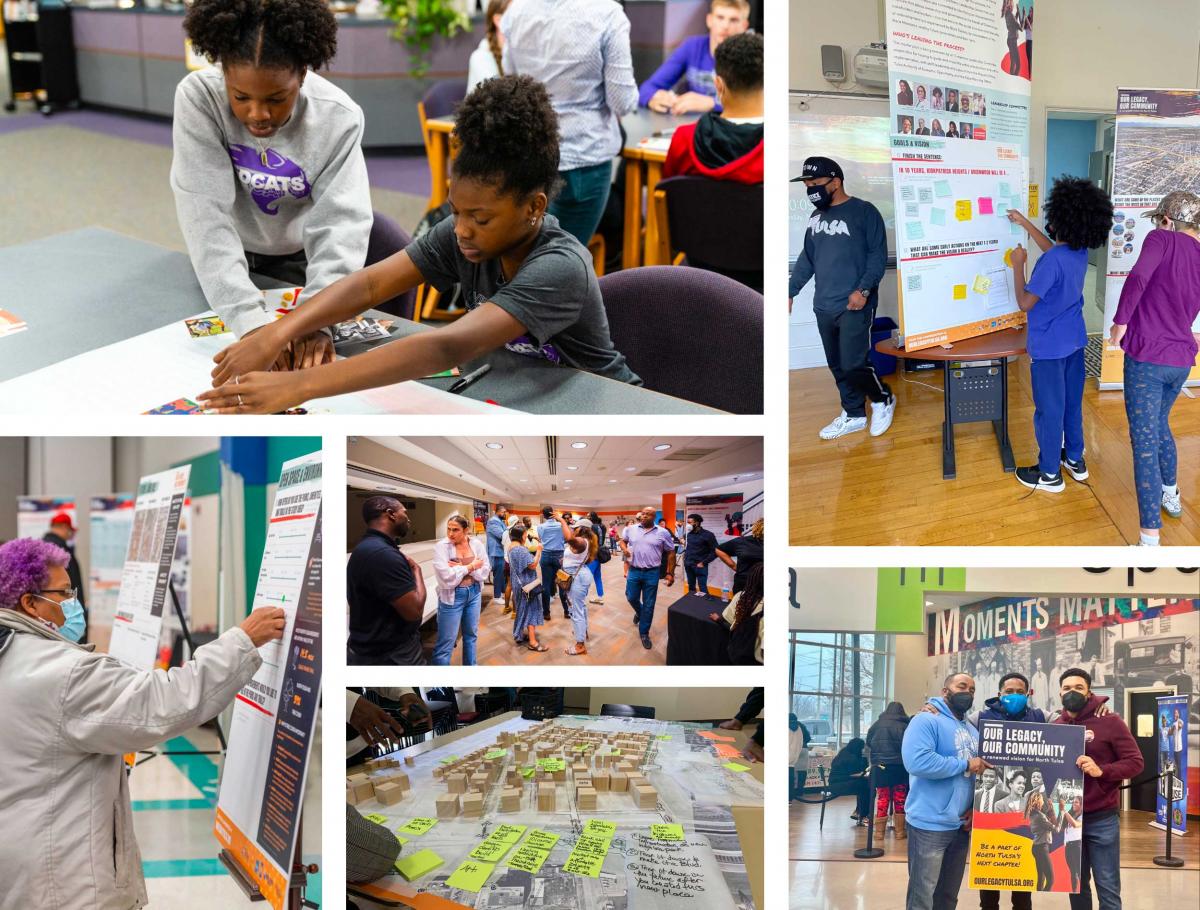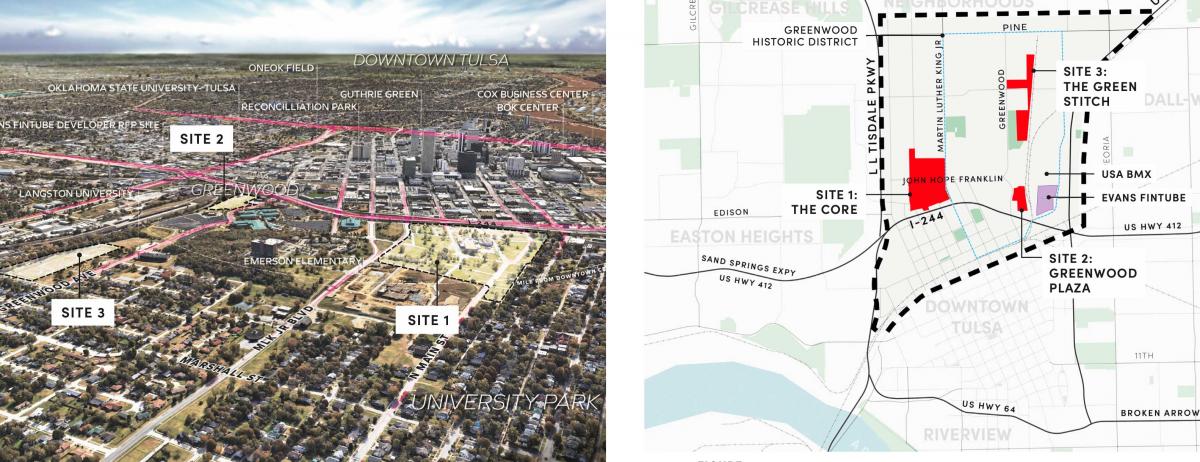
Redevelopment plan advances for Tulsa massacre area
A century after one of the worst race massacres in US history, the City of Tulsa is advancing plans to redevelop publicly owned land in and around the Greenwood neighborhood, north of downtown. One of the wealthiest Black communities in the US in 1921, Greenwood was demolished by a white mob, leaving hundreds dead and businesses destroyed.
Greenwood was largely rebuilt in subsequent decades but has declined economically and demographically since the 1960s, partly due to an Interstate that divides the area from downtown.
The redevelopment will be based on a community-driven plan called Our Legacy, Our Community: A Renewed Vision for North Tulsa, created with the support of the Mayor’s Office and the nonprofit Partner Tulsa. The planning process was led by Philadelphia-based WRT, with TSW’s Tulsa office serving as the local planning, urban design, and community outreach partner.

The Kirkpatrick Heights/Greenwood Master Plan will guide the growth of 56 acres of land, including three key publicly owned opportunity sites. Enhancing connections to downtown Tulsa will improve mobility and help overcome the barrier of I-244 between Greenwood and the core.
“The planning team worked hard to acknowledge the past, make an honest assessment of the present and map out a path to a more equitable future,” explains Katy O’Meilia, TSW associate principal planner and director of TSW Tulsa.
In January 2024, the Tulsa Development Authority (TDA) passed a resolution supporting the creation of an advisory committee that will help form a Community Development Corporation to redevelop the publicly-owned land. Three key sites include:
The Core. The Kirkpatrick Heights Addition area is the largest of the three sites at 45 acres—formerly consisting of an independent neighborhood with small blocks and a walkable character. The plan shows how these qualities could be restored with neighborhood shops and restaurants, other commercial and civic uses, and housing that provides a transition to existing neighborhoods.
Greenwood Plaza. At 6.35 acres, the proposed plaza is located within the Greenwood Historic District. “The community has emphasized the significance and importance of hosting Juneteenth at this location. Ideas include a more permanent event space (e.g., amphitheater), flexible park and plaza spaces, recreation, entertainment, small vendors and businesses, and community amenities,” according to the plan.
The Green Stitch. Located at the eastern end of the study, the Osage Trail Stormwater Detention Area includes a portion of the Osage Prairie Trail and is adjacent to residential and park uses.

The plan revolves around eight “big ideas,” as stated in the plan:
- Create The Core, a vibrant mixed-use destination rich with community amenities and a well-designed public realm that draws residents, workers, and visitors. The core consists of 63 publicly owned parcels.
- Encourage higher-intensity mixed-use development on the blocks closest to downtown, with creative spaces, offices, retail, and residential uses.
- Redesign the existing stormwater management basins as Resiliency Parks to manage stormwater and serve as recreational and open space amenities supporting community health and wellness.
- Extend the Greenwood Cultural Corridor north along Greenwood Avenue with the Greenwood Plaza, a new programmable public space, along with new streetscaping and wayfinding elements.
- Extend the Cultural Corridor along Main Street to the heart of the new mixed-use district, which will bring new entertainment, dining, and shopping options.
- Establish the Greenwood Streetcar, a circulator that will connect cultural assets, entertainment, job centers, and neighborhoods.
- Realign and redesign MLK Jr. Blvd as an attractive, multimodal gateway corridor connecting downtown and North Tulsa.
- Create a sustainable district built for the future with new development incorporating resilient infrastructure and energy production.
See a video on the project, Part 1.
Video, Part 2
Editor's note: This article addresses CNU’s Strategic Plan goals of advancing design strategies that help communities adapt to climate change and mitigate its future impact and growing the supply of neighborhoods that are both walkable and affordable.




